.01
Dingli Cliffs
The Dingli Cliffs, with their sheer drops, are the highest point of Malta at around 250 metres above sea level. The views are breath-taking, overlooking the small terraced fields below, the open sea, and Filfla, the small uninhabited island just a short distance from the coast. The area is popular for country walks and picnics and offers not only views of the cliffs, but also views of inland Malta and nearby Buskett Gardens and Verdala Palace. The chapel of St Magdalena (1646) is located on the cliffs and the small Dingli village is about a kilometre away. The cliffs extend for several kilometres from Bahrija in the north to the Blue Grotto in the south. The views are particularly attractive at sunset.
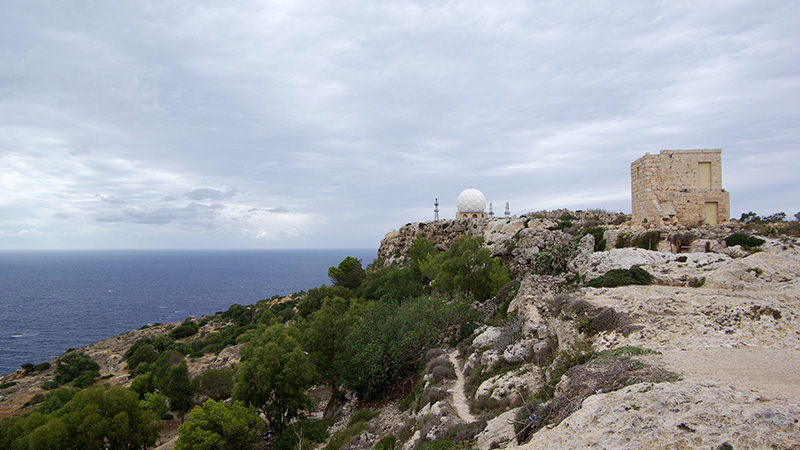
.01
Dingli Cliffs
The Dingli Cliffs, with their sheer drops, are the highest point of Malta at around 250 metres above sea level. The views are breath-taking, overlooking the small terraced fields below, the open sea, and Filfla, the small uninhabited island just a short distance from the coast. The area is popular for country walks and picnics and offers not only views of the cliffs, but also views of inland Malta and nearby Buskett Gardens and Verdala Palace. The chapel of St Magdalena (1646) is located on the cliffs and the small Dingli village is about a kilometre away. The cliffs extend for several kilometres from Bahrija in the north to the Blue Grotto in the south. The views are particularly attractive at sunset.
.02
Buskett Gardens
Buskett Gardens form one of the few woodland areas in Malta and are located in the fertile valley of Wied il-Luq in Siġġiewi and are not far from the Dingli Cliffs. Buskett Gardens was planted by the Knights of Malta to be used as a hunting ground. It is difficult to decide whether Buskett constitutes a garden or a forest as its name implies since there are parts that are obviously planned while others are wilder. The gardens are enchanting because of this human versus nature mix inspiring a feeling of agelessness using subtle centuries old structures such as stone walls, stone arches covered in shrubbery and a stone dais.
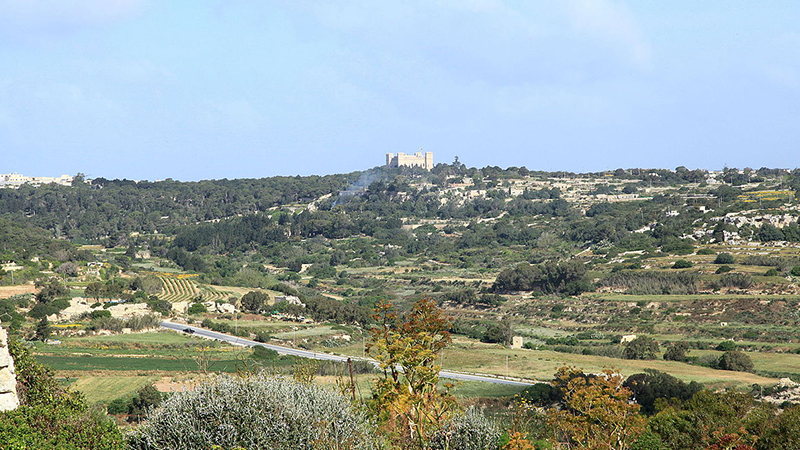
.02
Buskett Gardens
Buskett Gardens form one of the few woodland areas in Malta and are located in the fertile valley of Wied il-Luq in Siġġiewi and are not far from the Dingli Cliffs. Buskett Gardens was planted by the Knights of Malta to be used as a hunting ground. It is difficult to decide whether Buskett constitutes a garden or a forest as its name implies since there are parts that are obviously planned while others are wilder. The gardens are enchanting because of this human versus nature mix inspiring a feeling of agelessness using subtle centuries old structures such as stone walls, stone arches covered in shrubbery and a stone dais.
.03
Bugibba
Buġibba is a coastal town within St. Paul’s Bay. This is a large and popular area stretching for 5km along St Paul’s Bay, around Qawra Point and into Salina Bay. Bugibba is the largest resort in the area, with good views of the bay and its islands. Proving its popularity, Bugibba has the liveliest nightlife including bars, restaurants, a cinema, bingo halls and even a casino.
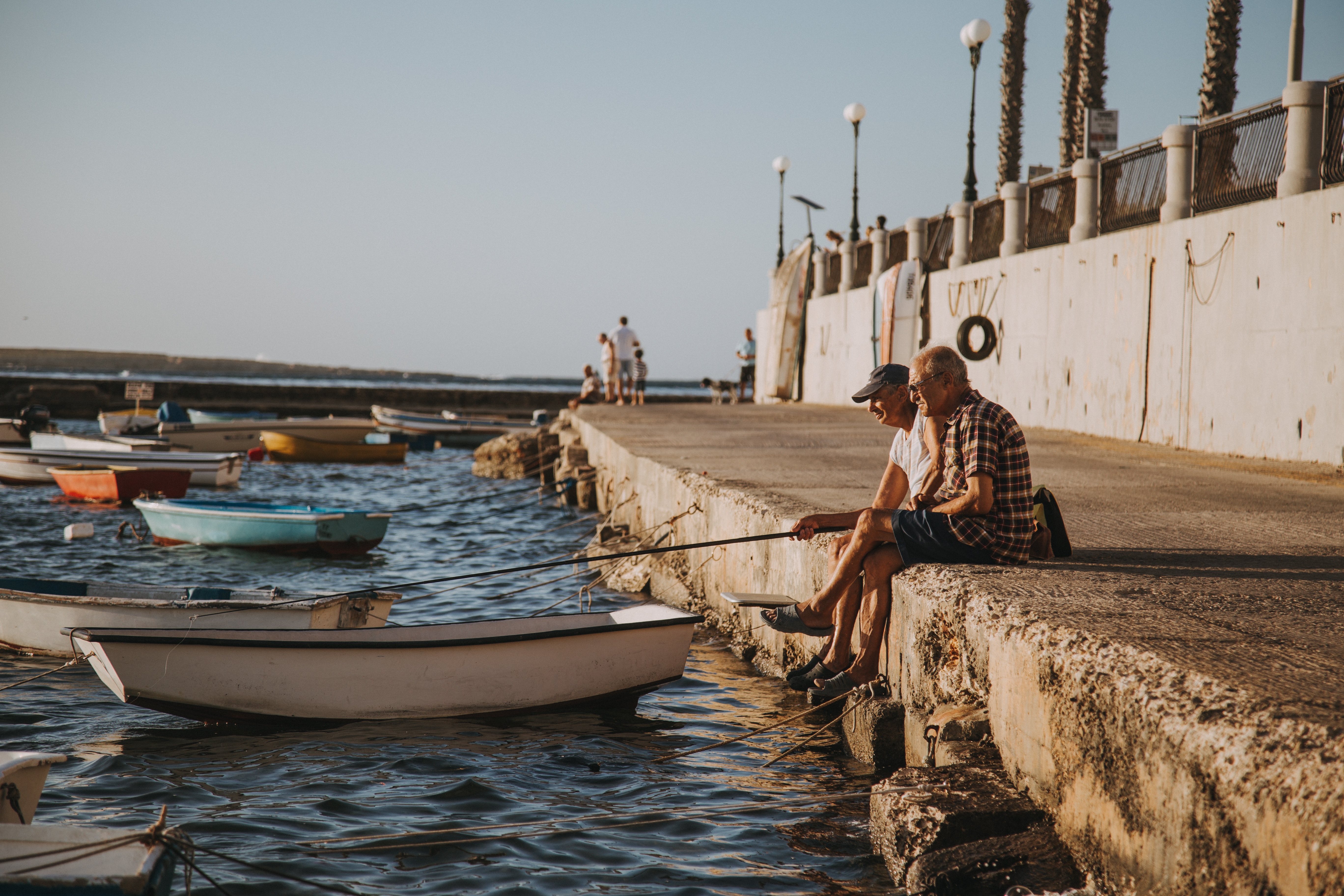
.03
Bugibba
Buġibba is a coastal town within St. Paul’s Bay. This is a large and popular area stretching for 5km along St Paul’s Bay, around Qawra Point and into Salina Bay. Bugibba is the largest resort in the area, with good views of the bay and its islands. Proving its popularity, Bugibba has the liveliest nightlife including bars, restaurants, a cinema, bingo halls and even a casino.
.04
The Victoria Lines
The Victoria Lines, or as it was originally called the North-West Wall, were built along the top of the escarpment known as the Great Fault line. This surprising geology feature of Malta divides the island in half and gives the walker a great scenic view. The Maltese Victoria Lines were built by the British and finished in the year of Queen Victoria’s Diamond Jubilee (1897), hence their name. You can walk across the whole island of Malta along each individual section that makes up as a whole Malta’s Victoria Lines. The walking route along the Lines is one of the most spectacular and peaceful walking paths on the islands of Malta and Gozo.
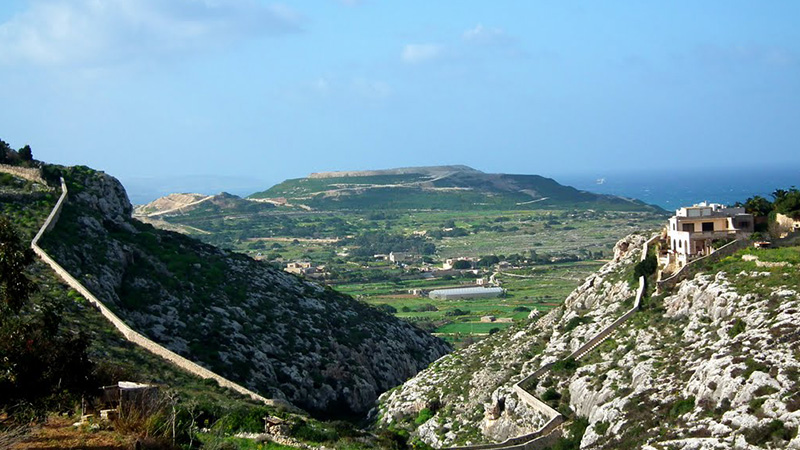
.04
The Victoria Lines
The Victoria Lines, or as it was originally called the North-West Wall, were built along the top of the escarpment known as the Great Fault line. This surprising geology feature of Malta divides the island in half and gives the walker a great scenic view. The Maltese Victoria Lines were built by the British and finished in the year of Queen Victoria’s Diamond Jubilee (1897), hence their name. You can walk across the whole island of Malta along each individual section that makes up as a whole Malta’s Victoria Lines. The walking route along the Lines is one of the most spectacular and peaceful walking paths on the islands of Malta and Gozo.
.05
Fomm ir-Rih
‘Fomm Ir-Rih Bay’ translates from Maltese as ‘Mouth of the Wind Bay’ and if you visit during the winter months you’ll soon find out why. This wide bay has high, vertical cliffs lining one side and cascading clay cliffs on the other and the winds can be ferocious and bring the swell up high on the cliff face and sea spray will reach the cliff tops. It provides spectacular photo taking opportunities. In contrast, during the calm months of spring and summer the bay is most often serene. At the head of the bay you’ll see what is definitely Malta’s most remote and somewhat inaccessible beach. Even during the peak of summer you won’t see more than a few bathers. Looking north from high above the southern arm of the bay you can soak in the marvelous vista of the rugged and indented coastline all the way to the Ta Cenc cliffs on Gozo.
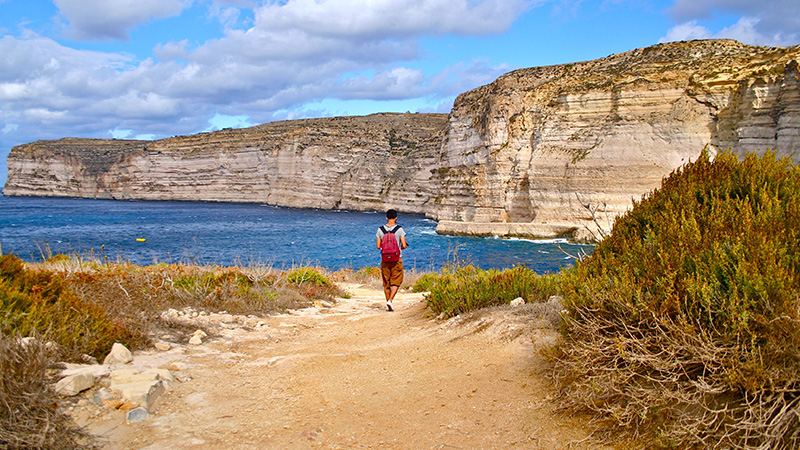
.05
Fomm ir-Rih
‘Fomm Ir-Rih Bay’ translates from Maltese as ‘Mouth of the Wind Bay’ and if you visit during the winter months you’ll soon find out why. This wide bay has high, vertical cliffs lining one side and cascading clay cliffs on the other and the winds can be ferocious and bring the swell up high on the cliff face and sea spray will reach the cliff tops. It provides spectacular photo taking opportunities. In contrast, during the calm months of spring and summer the bay is most often serene. At the head of the bay you’ll see what is definitely Malta’s most remote and somewhat inaccessible beach. Even during the peak of summer you won’t see more than a few bathers. Looking north from high above the southern arm of the bay you can soak in the marvelous vista of the rugged and indented coastline all the way to the Ta Cenc cliffs on Gozo.
.06
Bahrija Cliffs
Malta is abundantly endowed with stunning cliff scenery and there is perhaps no better place to see them then along the coast near the small northern village of Bahrija. Not only are these the easiest cliffs on Malta to view, but it has the most varied landscape as well. From craggy inlets that shoot up plumes of water during rough seas to building sized white limestone boulders, smooth and distorted in shape and sitting atop the cliffs as if a giant had placed them there, there is so much to see for any avid hiker. The striking contrast between the deep blue of the sea and the layered white, red and yellow limestone of the surrounding cliffs leaves visitors awestruck.
.06
Bahrija Cliffs
Malta is abundantly endowed with stunning cliff scenery and there is perhaps no better place to see them then along the coast near the small northern village of Bahrija. Not only are these the easiest cliffs on Malta to view, but it has the most varied landscape as well. From craggy inlets that shoot up plumes of water during rough seas to building sized white limestone boulders, smooth and distorted in shape and sitting atop the cliffs as if a giant had placed them there, there is so much to see for any avid hiker. The striking contrast between the deep blue of the sea and the layered white, red and yellow limestone of the surrounding cliffs leaves visitors awestruck.
.07
Mellieha Sanctuary
It was originally constructed in the late 16th century and contains a Byzantine-style fresco depicting the Blessed Virgin Mary with Christ on her right arm. Tradition has it that the painting was made by St. Luke when he was shipwrecked on the island with St. Paul, but recent studies have shown it to be an early 12th century work. The church expanded several times to accommodate the growing population of the village and the roofed veranda is considered a classic example of 17th century Renaissance architecture. Pope John Paul II blessed the sanctuary during his visit to Malta in May 1990.

.07
Mellieha Sanctuary
It was originally constructed in the late 16th century and contains a Byzantine-style fresco depicting the Blessed Virgin Mary with Christ on her right arm. Tradition has it that the painting was made by St. Luke when he was shipwrecked on the island with St. Paul, but recent studies have shown it to be an early 12th century work. The church expanded several times to accommodate the growing population of the village and the roofed veranda is considered a classic example of 17th century Renaissance architecture. Pope John Paul II blessed the sanctuary during his visit to Malta in May 1990.
.08
Salina Catacombs
The Salina Catacombs are a cluster of small catacombs located near the Church of the Annunciation in Salina. Although small when compared to the catacombs of St. Paul and St. Agatha in Rabat, they are an important record of the considerable community. The catacombs open onto a low ridge facing a now lost Roman Harbour, making the small site archaeologically significant. The site comprises five hypogea cut into the vertical surface of a small quarry. A number of other openings can be seen in rocky outcrops around the site. The most impressive hypogeum is adorned with two decorated pillars, an agape table and two tombs, rarely found outside the catacombs of Rabat.
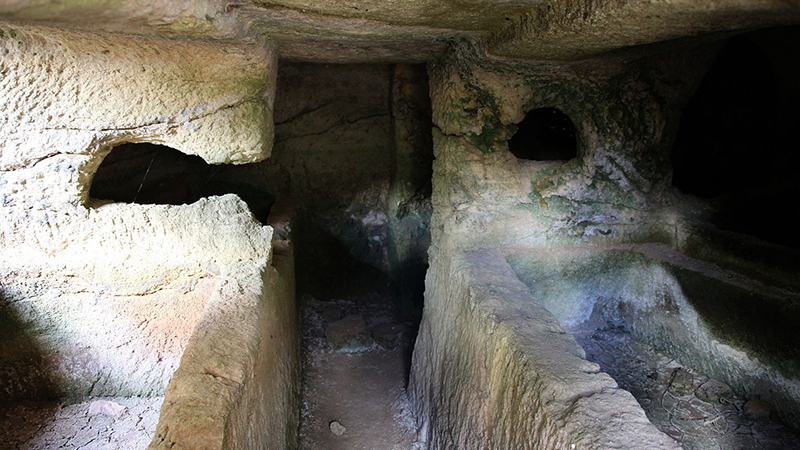
.08
Salina Catacombs
The Salina Catacombs are a cluster of small catacombs located near the Church of the Annunciation in Salina. Although small when compared to the catacombs of St. Paul and St. Agatha in Rabat, they are an important record of the considerable community. The catacombs open onto a low ridge facing a now lost Roman Harbour, making the small site archaeologically significant. The site comprises five hypogea cut into the vertical surface of a small quarry. A number of other openings can be seen in rocky outcrops around the site. The most impressive hypogeum is adorned with two decorated pillars, an agape table and two tombs, rarely found outside the catacombs of Rabat.
.09
St. Agatha's Tower
St. Agatha’s Tower, also known as the Red Tower, is a large bastioned watchtower in Mellieħa. It was built between 1647 and 1649 as the sixth of the Lascaris towers. St. Agatha’s Tower was the last large bastioned tower to be built in Malta. The structure consists of a square tower with four corner towers. Cannon ports in the turrets gave interlocking fields of fire along with other large cannon ports in the faces of the main tower. The outer walls are approximately four metres thick at the base and the interior of the tower is enclosed by a barrel vaulted roof.
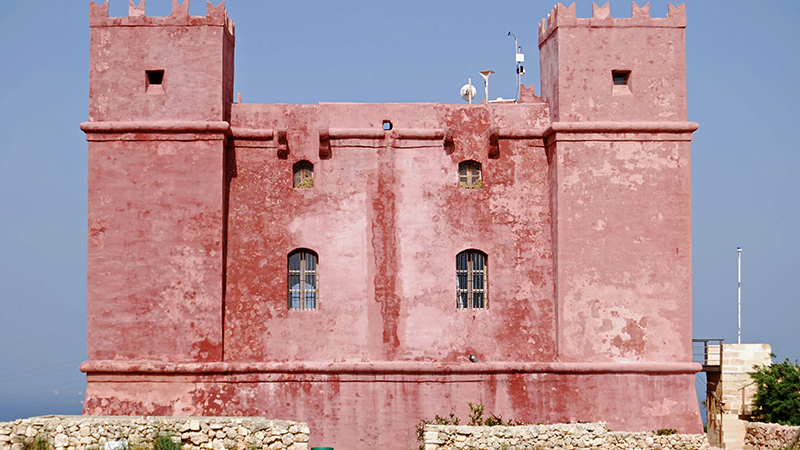
.09
St. Agatha's Tower
St. Agatha’s Tower, also known as the Red Tower, is a large bastioned watchtower in Mellieħa. It was built between 1647 and 1649 as the sixth of the Lascaris towers. St. Agatha’s Tower was the last large bastioned tower to be built in Malta. The structure consists of a square tower with four corner towers. Cannon ports in the turrets gave interlocking fields of fire along with other large cannon ports in the faces of the main tower. The outer walls are approximately four metres thick at the base and the interior of the tower is enclosed by a barrel vaulted roof.
.10
Xemxija Roman Beehives
The ancient beehives in Malta are found on the eastward slope of a hill overlooking St. Paul’s Bay. This ‘bee-house’ consists of a doorway running into a passage parallel to the façade, which is pierced with holes. Each hole held a cylindrical pottery beehive laid on its side with a small hole to the exterior, which the bees used and a larger one to the passage. This latter was blocked with a tile until the beekeeper wished to remove the honeycomb.
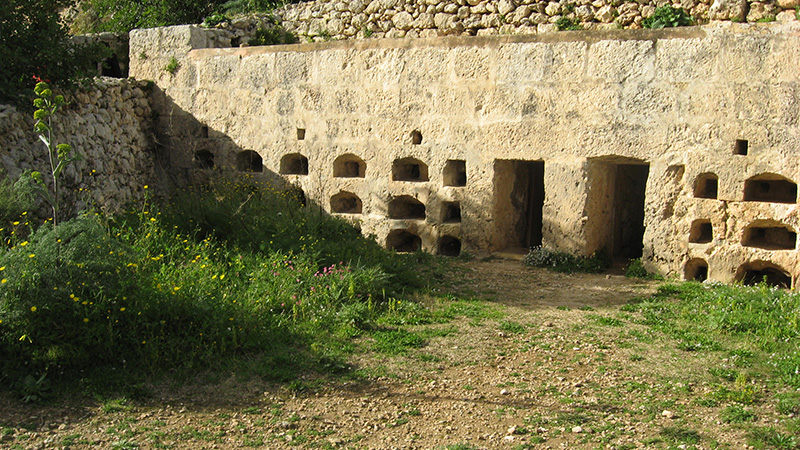
.10
Xemxija Roman Beehives
The ancient beehives in Malta are found on the eastward slope of a hill overlooking St. Paul’s Bay. This ‘bee-house’ consists of a doorway running into a passage parallel to the façade, which is pierced with holes. Each hole held a cylindrical pottery beehive laid on its side with a small hole to the exterior, which the bees used and a larger one to the passage. This latter was blocked with a tile until the beekeeper wished to remove the honeycomb.